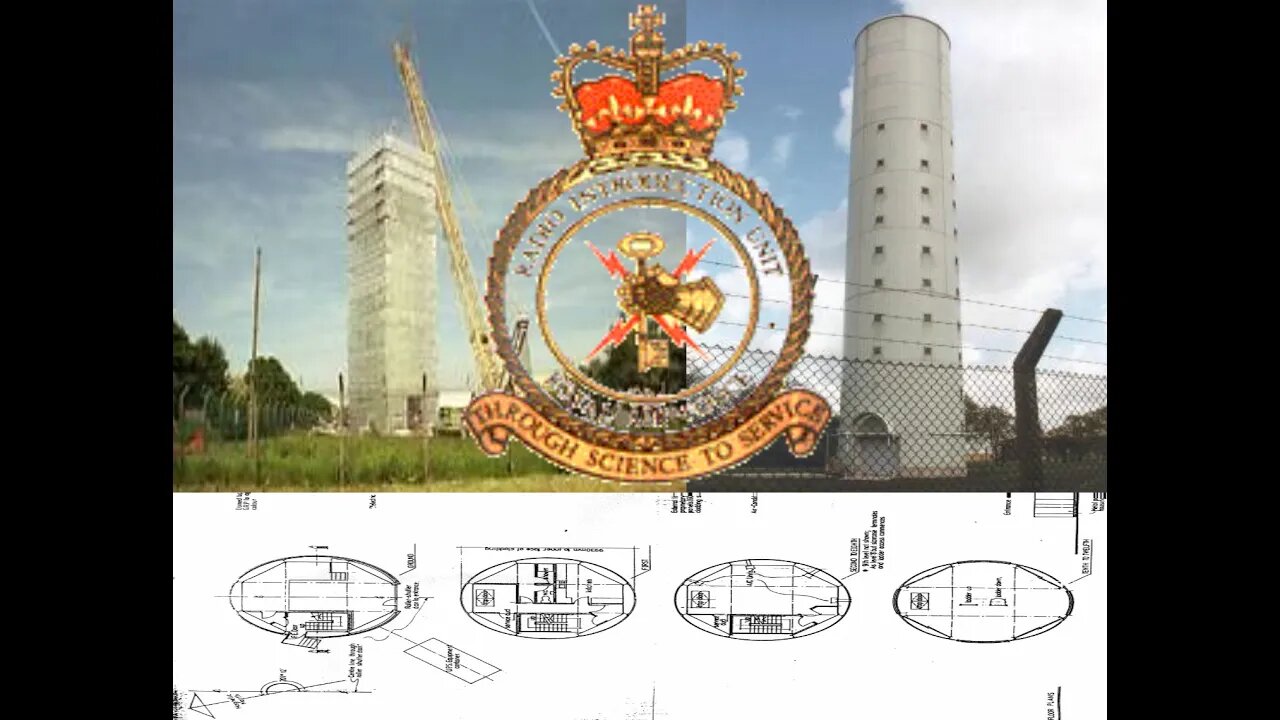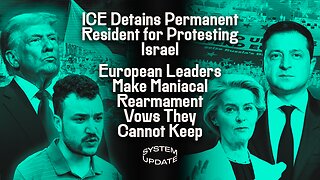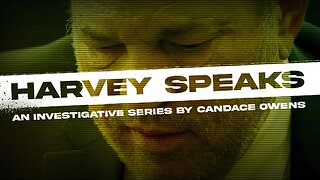Premium Only Content

Rediscovered Channel4 News Report- The Mysterious Capenhurst Tower- Very Rare Segment
TOP-SECRET Eavesdropping Operation Coverup, the government is being taken to the European human rights court over allegations that the security and intelligence agencies have been engaged in the wholesale tapping of telephone conversations between Britain and Ireland.
It has refused to deny claims, first made, that it tapped the phones from a tower at Capenhurst in Cheshire.
The tower - described by the Ministry of Defence as an "electronic test facility" - intercepted phone calls carried by radio microwave between British Telecom relay stations at Gwaenysgor, Clywd, and Pale Heights, near Chester.
The stations carried Ireland's telecommunications links through Britain.
The government has never denied claims about the purpose of the Capenhurst tower which were first made by Channel 4 News.
Lawyers representing the Irish Council for Civil Liberties, Liberty, its British counterpart, and British Irish Rights Watch, claim the interceptions breached article 8 of the European human rights convention guaranteeing the right to privacy.
The Capenhurst tower, they said, had the capacity to intercept 10,000 simultaneous phone channels from Dublin to London and elsewhere. Tapped conversations included legally privileged material such as discussions between human rights groups and individuals who sought their assistance, they said.
They pointed to a section of the 1985 Interception of Communications Act which allows the security and intelligence agencies to seek warrants enabling them to tap conversations without referring to a specific target or address.
The act allows the home secretary to issue a warrant covering any information the agencies say they need to carry out their functions - so-called "certified" material - from "external communications".
However, they can only gather this material by intercepting other conversations and information passing through the communications link.
"The procedure ... by its nature requires all material, regardless of whether it falls within the scope of the purposes defined in the warrants or not, to be intercepted," Richard Clayton, counsel for the human rights groups, said in their submission to the European court.
He added: "The material is then examined after the event in order to discover whether it falls within the scope of the warrant." He said the 1985 act effectively allows interception for "any purpose".
The Capenhurst tower is redundant and up for sale and Ireland has a new fibre optic telecommunications system. Early this year, David Andrews, the former Irish foreign minister, said he accepted assurances from Robin Cook that Britain was not involved in indiscriminate or blanket tapping of Irish communications.
Minutes of an Irish security committee, released under the country's freedom of information act, concluded there was "no firm evidence available to the Irish authorities that commercial telecommunications traffic originating in or destined for this country has been intercepted in a systematic or extra-legal way".
However, members of the committee argued that interception technology in possession of many countries, including Britain, suggests that illegal bugging is going on.
The human rights groupsbringing the test case argue that indiscriminate bugging is being allowed by existing English law in contravention of the human rights convention.
John Wadham, director of Liberty, said yesterday that the loophole in the 1985 act will remain in the new regulation of investigatory powers bill which gives the security and intelligence agencies sweeping new bugging powers.
The full story here - https://www.lamont.me.uk/capenhurst/followup.html
-
 1:29:26
1:29:26
Glenn Greenwald
3 hours agoICE Detains Permanent Resident for Protesting Israel; European Leaders Make Maniacal Rearmament Vows They Cannot Keep | SYSTEM UPDATE #421
35.4K29 -
 1:02:56
1:02:56
Donald Trump Jr.
6 hours agoUSAID Slush Fund Slashed, X Cyberattack, Plus Interview with Nate Morris | Triggered Ep.223
74.6K66 -
 5:48:40
5:48:40
Dr Disrespect
9 hours ago🔴LIVE - DR DISRESPECT - THE SHOTTY BOYS - WARZONE, PUBG, FORTNITE
119K30 -
 2:12:50
2:12:50
Adam Carolla
11 hours agoDouble Murder Convict to be executed by Firing Squad + Comedian Elon Gold + Comedian Carol Leifer
25.7K3 -
 46:08
46:08
Kimberly Guilfoyle
6 hours agoBad Day to be a Bad Guy: FBI Taking Down World’s Worst Criminals, Live with John Nantz | Ep.203
77.7K28 -
 DVR
DVR
Redacted News
5 hours agoWhat's REALLY going on in Syria? | Redacted with Natali Morris
105K58 -
 54:18
54:18
Candace Show Podcast
5 hours agoHarvey Speaks: Jessica Mann & The Five Year Affair | Ep 3
101K27 -
 56:53
56:53
Grant Stinchfield
4 hours ago $4.08 earnedFreeze Spending & Kick the Can Down the Road... Why Republicans Should do Just That!
47.4K6 -
 56:48
56:48
VSiNLive
4 hours agoFollow the Money with Mitch Moss & Pauly Howard | Hour 1
43.6K -
 3:28:27
3:28:27
Barry Cunningham
6 hours agoTRUMP DAILY BRIEFING: INTERNET UNDER ATTACK! X & RUMBLE DOWN! EXECUTIVE ORDER SIGNING!
68.8K36